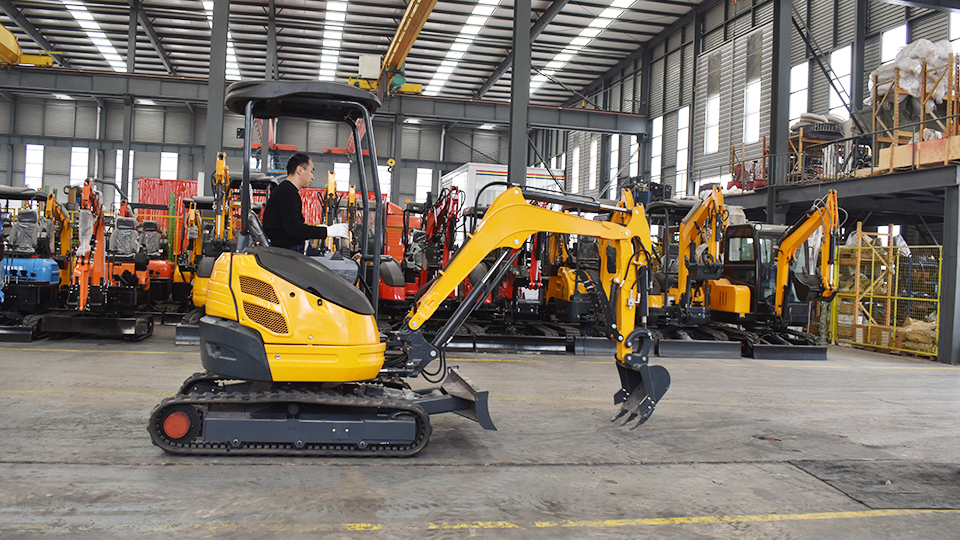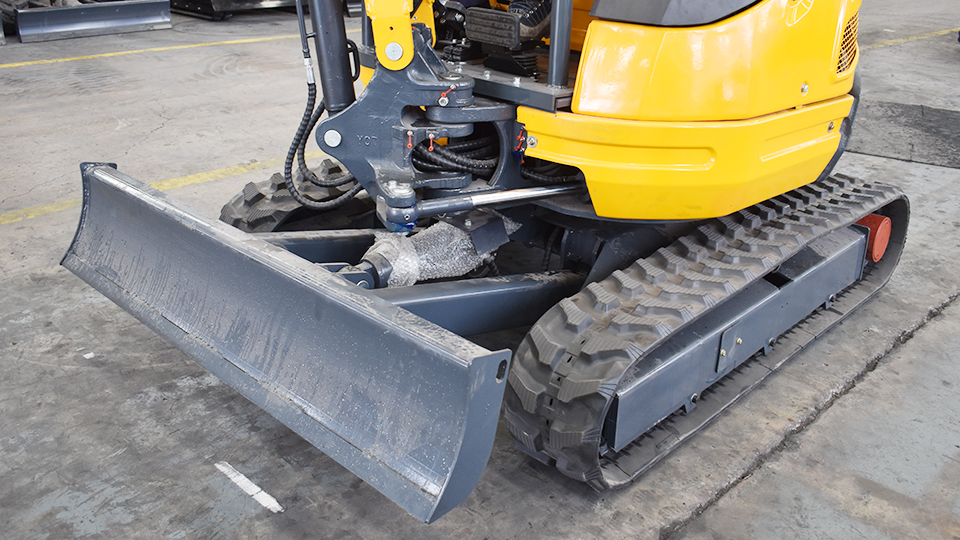The Long Haul: Understanding the Typical Lifespan of Excavators
Excavators are significant capital investments for construction companies, contractors, and even individual landowners. Understanding their expected lifespan is crucial for financial planning, maintenance scheduling, and making informed decisions about purchasing new or used equipment. However, pinpointing a precise "expiration date" for an excavator is not straightforward. The longevity of these powerful machines is influenced by a complex interplay of factors, making the answer to "how long do excavators typically last?" a nuanced one.
Generally speaking, a well-maintained excavator can be expected to provide 7,000 to 10,000 hours of reliable service before requiring major component overhauls or being considered for retirement from primary, demanding tasks. This translates roughly to 7 to 10 years of operational life for many contractors, assuming an average of 1,000 operational hours per year. However, this is merely an average, and the actual lifespan can vary significantly, extending to 15,000 to 20,000 hours or even beyond under optimal conditions, or plummeting to less than 8,000 hours with neglect and harsh usage.
To truly understand the lifespan of an excavator, we must delve into the critical factors that contribute to its longevity:
I. The Foundation: Build Quality and Initial Condition
The inherent quality of the excavator from the manufacturer plays a significant role in its potential lifespan. Machines built with high-grade materials, robust components, and precise engineering are naturally more durable and resistant to wear and tear. Well-known and reputable brands often have a track record of producing longer-lasting equipment.
Furthermore, the initial condition of a used excavator at the time of purchase heavily influences its remaining lifespan. An excavator that has already accumulated a high number of hours or has a history of poor maintenance will naturally have a shorter remaining operational life compared to a lower-hour, well-cared-for machine. Thorough pre-purchase inspections are crucial to assess the true condition and remaining lifespan of a used excavator.

II. The Human Factor: Operator Skill and Habits
The skill and operating habits of the individuals using the excavator have a profound impact on its longevity. Well-trained operators who adhere to proper operating procedures, avoid excessive idling, prevent rough handling, and respect the machine's limitations will significantly extend its lifespan. Conversely, inexperienced or careless operators who engage in abusive practices like overloading, rapid cycling, and improper maneuvering can drastically accelerate wear and tear on critical components, leading to premature failure and a shortened lifespan.
III. The Lifeblood: Regular and Diligent Maintenance
Maintenance is arguably the most critical factor in determining an excavator's lifespan. Consistent adherence to the manufacturer's recommended maintenance schedule, using high-quality lubricants and filters, and promptly addressing any minor issues before they escalate into major problems are essential for maximizing the machine's operational life.
Key maintenance practices that significantly impact lifespan include:
Regular Inspections: Daily walk-around inspections and periodic thorough checks help identify early signs of wear, leaks, or damage.
Lubrication: Proper and timely lubrication of all moving parts (pins, bushings, etc.) minimizes friction and wear, extending the life of these critical components.
Fluid Management: Regular checks and changes of engine oil, hydraulic fluid, coolant, and other fluids, along with filter replacements, ensure optimal system performance and prevent contamination and overheating.
Undercarriage Maintenance: The undercarriage (tracks, rollers, sprockets, idlers) is a high-wear area. Regular cleaning, proper track tension adjustment, and timely replacement of worn components are crucial for extending its lifespan and overall machine life.
Hydraulic System Care: Inspecting hoses, cylinders, and connections for leaks and damage, and ensuring the hydraulic fluid is clean and at the correct level, prevents costly hydraulic system failures.
Engine Maintenance: Following the manufacturer's recommendations for engine servicing, including oil changes, filter replacements, and timely addressing of any engine-related issues, is vital for a long engine life, which is a significant contributor to the overall excavator lifespan.
Electrical System Checks: Ensuring the integrity of the electrical system, including battery connections and wiring, prevents malfunctions that can lead to downtime and further complications.
Neglecting maintenance can lead to accelerated wear, increased risk of breakdowns, costly repairs, and a significantly reduced lifespan for the excavator.
IV. The Battleground: Operating Environment and Application
The environment in which the excavator operates and the types of tasks it performs also play a crucial role in its longevity.
Harsh Operating Conditions: Excavators working in extreme temperatures (both hot and cold), dusty or abrasive environments, and on uneven or rocky terrain will experience more wear and tear compared to those operating in milder, cleaner conditions on relatively level ground.
Application Intensity: Excavators subjected to continuous heavy digging, rock breaking, or demolition work will naturally experience higher stress on their components than those used for lighter tasks like grading or landscaping.
Exposure to Corrosive Materials: Operation in environments with exposure to saltwater, chemicals, or other corrosive substances can accelerate rust and degradation of metal components, shortening the excavator's lifespan.
Taking measures to mitigate the impact of harsh operating conditions, such as regular cleaning to remove debris and protecting the machine from extreme weather when not in use, can help prolong its life. Using the correct type and size of excavator for the specific application also minimizes unnecessary strain on the machine.
V. The Inevitable: Component Wear and Replacement
Even with meticulous maintenance and careful operation, excavator components will eventually wear out and require replacement. The lifespan of individual components varies:
Undercarriage Components: Tracks, rollers, sprockets, and idlers are typically among the first major components to require replacement, often within the 5,000 to 10,000-hour range, depending on the operating environment and maintenance.
Hydraulic Hoses and Cylinders: These components can degrade over time due to pressure, temperature fluctuations, and environmental factors.
Engine and Hydraulic Pump: With proper maintenance, the engine and main hydraulic pump can often last for the majority of the excavator's primary lifespan, but major overhauls or replacements may be necessary in higher-hour machines.
Wear Parts (Teeth, Cutting Edges): These consumable parts require frequent replacement depending on the application.
The frequency and cost of component replacements will significantly influence the overall cost of ownership and the economic viability of continuing to operate an older excavator.
VI. Technological Advancements and Obsolescence
While not directly related to physical wear and tear, technological advancements can also influence when an excavator is considered "past its prime." Newer models often incorporate features that improve efficiency, safety, and operator comfort. As technology progresses, older excavators may become less competitive due to lower productivity or lack of modern safety features. Additionally, the availability of parts for older models can become a factor in the decision to retire a machine.

Extending the Lifespan of Your Excavator:
Proactive measures can significantly extend the lifespan of an excavator:
Implement a Strict Maintenance Schedule: Adhere to the manufacturer's recommendations and even implement more frequent servicing in demanding conditions.
Invest in Operator Training: Ensure all operators are properly trained on safe and efficient operating procedures.
Conduct Daily Pre- and Post-Operation Checks: Identify and address minor issues promptly.
Keep the Excavator Clean: Regular cleaning removes abrasive materials and allows for easier inspection.
Use the Correct Attachments for the Job: Avoid overstressing the machine with inappropriate attachments.
Monitor Operating Hours and Plan for Component Replacement: Proactive planning can help budget for and schedule major repairs.
Consider Mid-Life Overhauls: For high-hour machines, a mid-life overhaul involving the replacement or rebuilding of major components can significantly extend its useful life.
Utilize Telematics and Equipment Management Software: These tools can help track operating hours, schedule maintenance, and identify potential issues early.
Conclusion:
The typical lifespan of an excavator is a range rather than a fixed number, heavily influenced by factors such as build quality, operator behavior, maintenance practices, operating environment, and the intensity of use. While 7,000 to 10,000 hours represents a common benchmark for primary service, diligent maintenance and careful operation can extend this significantly. Conversely, neglect and harsh conditions can lead to a much shorter operational life. Understanding these influencing factors empowers owners and operators to make informed decisions about maintenance, operation, and the eventual replacement of their valuable excavating equipment, maximizing their return on investment and ensuring safe and productive operations for years to come.
Post time:Sep-25-2020
